7 Low-Maintenance Landscaping Ideas for Virginia
BY JEFFERY KEUSSEYAN | MAY 15TH, 2023 | LAWN CARE, VIRGINIAWe all have plenty of reasons to love life in the Old Dominion, from its moderate climate to the stunning work of mother nature. We would rather spend our free time exploring the state parks, botanical gardens, or arboretums. However, spending hours on landscape maintenance and backyard chores will take up most of that time. Spend your weekends relaxing with 7 low-maintenance landscaping ideas for Virginia.
With a low-maintenance landscape design, you can reduce the amount of work, watering, weeding, and mowing required to upkeep your lawn. From hardscape features to automatic irrigation systems, we have come up with a list of ideas for an attractive yard while reducing the amount of maintenance required.
In this article, we will cover:
- Sustainable Hardscaping
- Xeriscaping to Conserve Water
- Mulching Plant Beds
- Supporting the Wildlife with Native Plants
- Perennials for Everlasting Charm
- Installing Automatic Irrigation Systems
- Eco-Friendly Artificial Turf
1. Sustainable Hardscaping
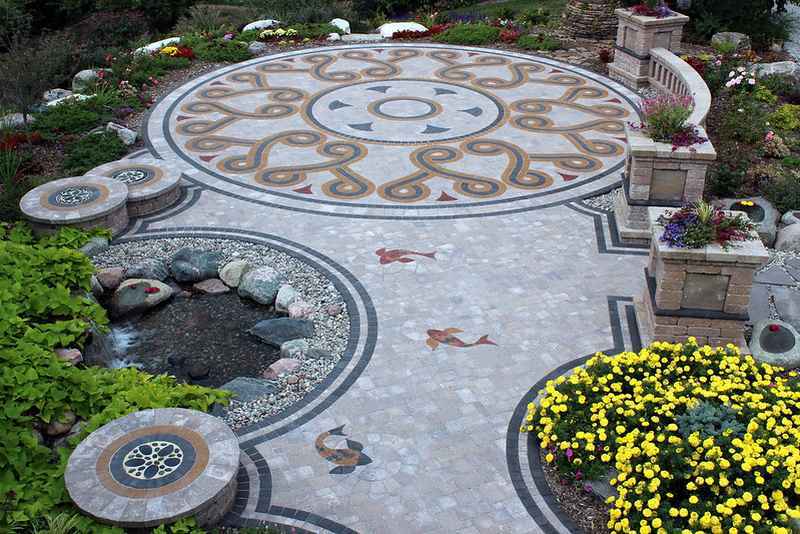
Photo Credit: Interlocking Concrete Pavement Institute / Flickr / CC BY 2.0
Hardscapes are naturally low-maintenance landscaping features that improve your outdoor space functions. Given they are non-living elements, hardscaping features won’t require any watering, pruning, or fertilizing.
However, they would still require the occasional cleaning and care. Consulting a professional landscaping company or hiring a pro will help you pick the right feature, and ensure minimal maintenance throughout the year.
Some examples of low-maintenance hardscaping features include:
- Gravel or stone walkways
- Asphalt or resin driveways
- Stone pavers
- Concrete patios
- Water features
- Pergolas and gazebos
Advantages of hardscaping:
- Conserve water by reducing the amount needed for irrigation
- Enhance drainage and reduce erosion
- Limit the growth of weeds
- Add value and curb appeal to your home
- Can serve recreational purposes
Estimated cost: The cost depends on the project size and the type of feature you choose. Expect to pay between $2,100 and $6,000 for a pergola, $5,365 and $9,025 for a gazebo, $1,140 and $3,690 for a water feature.
2. Xeriscaping to Conserve Water
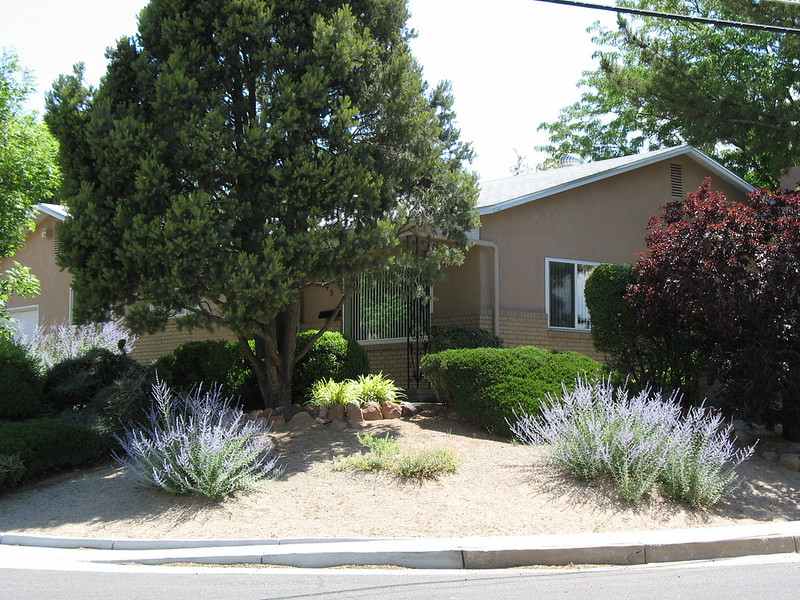
Photo Credit: teofilo / Flickr / CC BY 2.0
The aim of xeriscaping is to use as little water as possible, while still maintaining an attractive and eco-friendly landscape. It helps you create a beautiful and cost-effective backyard with barely any chores to complain about.
Additionally, xeriscaping is a wildlife-friendly approach, as it can attract beneficial insects and pollinators. If you have enough experience, you can save money by making it a DIY project, but installation can be back-breaking work.
Xeriscaping has become very popular over the years, helping you reduce the amount of water used by 50% to 75%.
Below are some examples of xeriscaping:
- Plant shade trees
- Use local rocks or boulders
- Drought-tolerant plants
- Replace turfgrass with groundcovers
- Group plants together based on their water needs
Advantages of xeriscaping:
- Less mowing, weeding, and watering
- Cut back on energy use
- Conserve water
- Promote biodiversity
- Create an inviting outdoor space
Estimated cost: On average, the cost of xeriscaping ranges from $5 to $20 per square foot.
3. Mulching Plant Beds
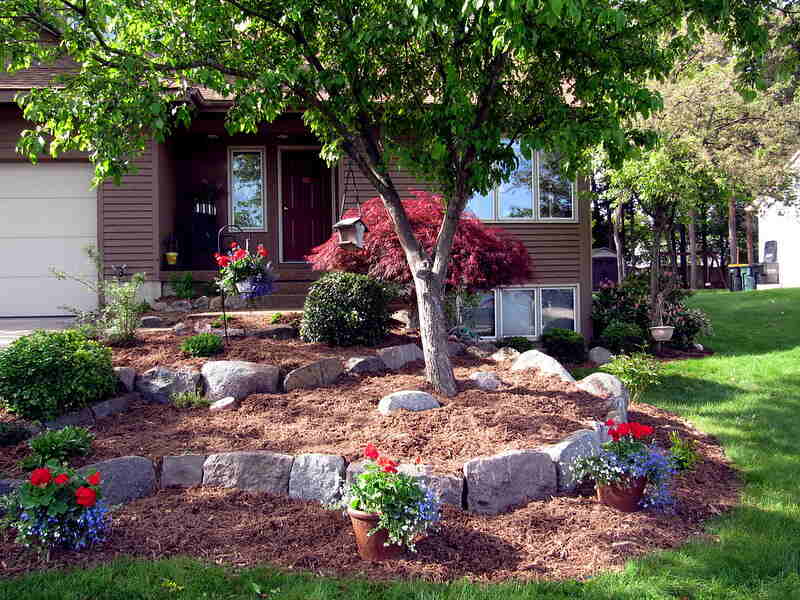
Photo Credit: Rachel Kramer / Flickr / CC BY 2.0
Applying mulch is an easy, cheap way to keep your garden healthy and hydrated. It is used to suppress weeds, retain moisture in the soil, and keep the soil cool. It can also help make your garden bed look more attractive. Fortunately, spreading mulch around your plants is a simple DIY task. There are two types of mulch for you to choose from:
Organic mulch:
- Not made of anything synthetic
- Can suppress weeds
- Best for adding beneficial nutrients to your garden
- Examples include needles, grass clippings, shredded leaves, bark, and pine
Inorganic mulch:
- Synthetic with no natural materials
- Doesn’t add value to the soil
- Best for fully blocking weeds
- Examples include gravel and stone, plastic and landscape fabric
Advantages of mulch:
- Adds nutrients to the soil (if organic)
- Protects soil and roots from harsh weather
- Controls the germination and growth of weeds
- Prevents the loss of soil moisture by reducing evaporation
Estimated cost: The amount you spend on mulch depends on which type you choose. Wood mulch costs between $3 to $5 per 2 cubic foot bag, while landscape gravel costs between $4 to $30 per 0.5 cubic foot bag.
4. Supporting the Wildlife with Native Plants
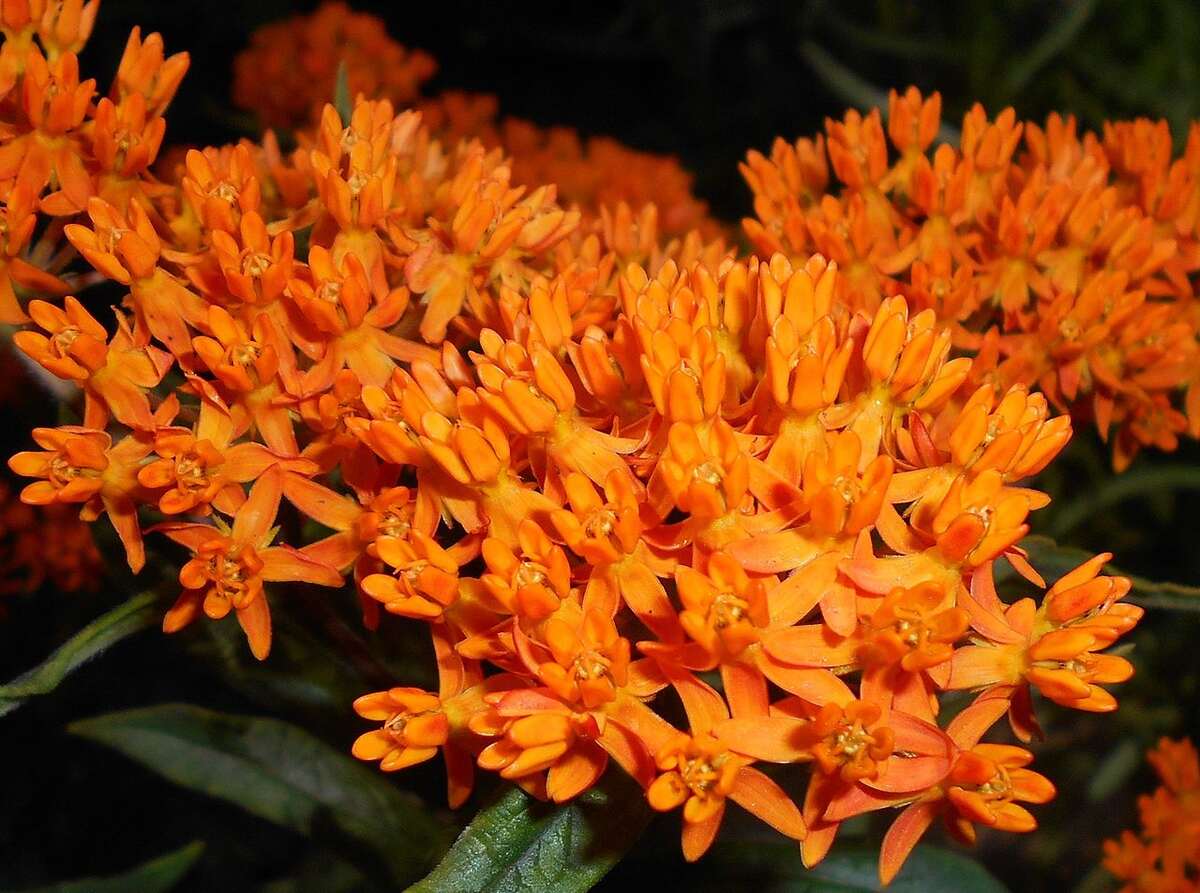
Photo Credit: Salicyna / Wikimedia Commons / CC BY-SA 4.0
Native plants grow naturally in Virginia, as they are accustomed to the state’s climate and soil conditions. They usually need little care to survive, though may require the occasional pruning. Native plants help keep the local ecosystem healthy, and provide a source of food for critters and wildlife. Be sure to conduct thorough research before selecting plants for your lawn, such as the area’s plant hardiness zone.
There are plenty of Virginia-native plants, including low-maintenance shrubs, for you to choose from. Below are some examples:
- Wild Hydrangea (Hydrangea arborescens)
- Butterfly Milkweed (Asclepias tuberosa)
- Smooth Purple Coneflower (Echinacea laevigata)
- Boxwood (Buxus)
Advantages of native plants:
- Less watering; saves time and money
- Little to no chemical treatments
- Less prone to pests and disease
- Drought- and heat-resistant
- Occur naturally in the region and habitat
- Help preserve local ecosystem
Estimated cost: Depending on the plant’s type and size, expect to pay between $600 and $3,000 per flower bed, $150 and $3,000 per tree, $25 and $50 per shrub.
5. Perennials for Everlasting Charm
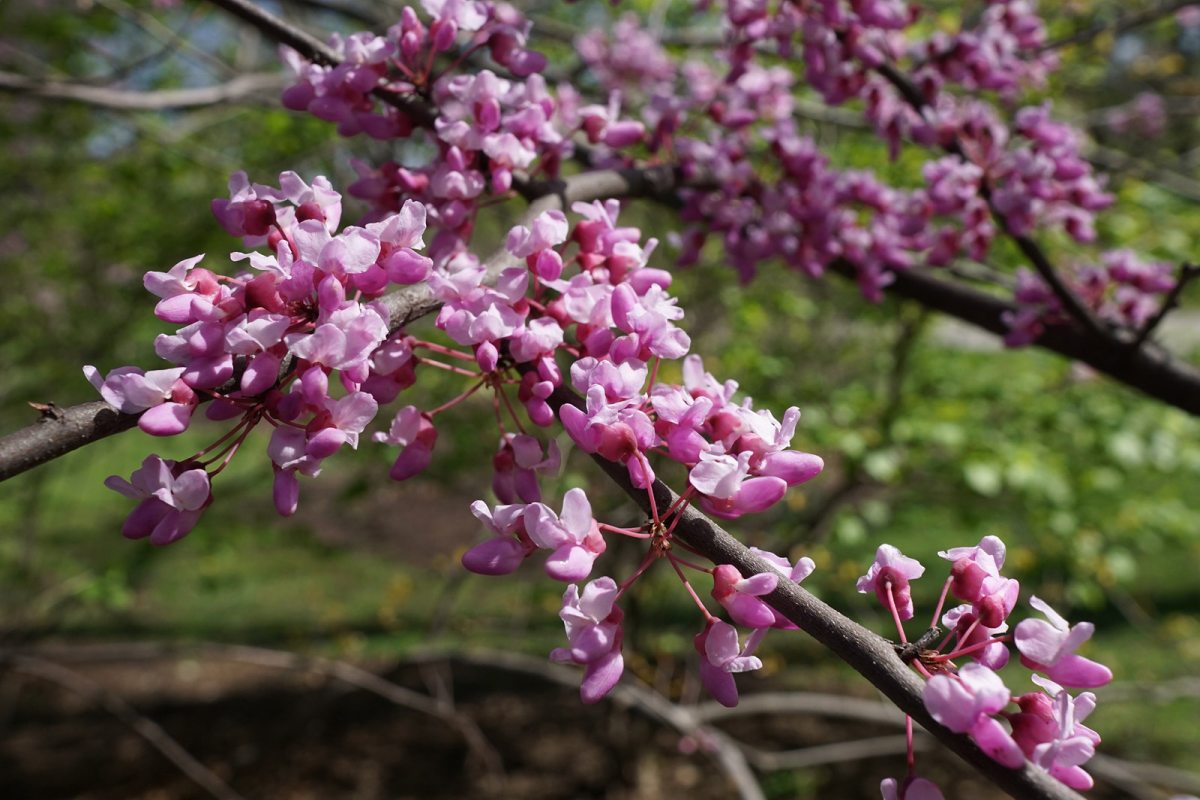
Photo Credit: Plant Image Library / Flickr / CC BY-SA 2.0
Perennials are a great way for you to obtain a low-maintenance landscape. Unlike annuals or biennials, perennials live for several years and require little care once established. In addition to adding beauty to your landscape, these plants will prevent you from having to buy new plants every year!
Virginia lies between USDA plant hardiness zones 5a and 8a. Be sure to pick the right plants that can thrive in your region.
Some perennials for your low-maintenance lawn:
- Red Maple (Acer rubrum)
- Flowering Dogwood (Cornus florida)
- Serviceberry (Amelanchier)
- Eastern Redbud (Cercis canadensis)
Advantages of perennials:
- Save you the hassle of having to replant every year
- Their deep root systems can improve soil quality
- Are able to thrive for several years
Estimated cost: The cost of perennials depends on the plant’s size, type, and whether you hire a pro to complete the landscaping project. On average, a perennial plant will cost you between $10 and $100.
6. Installing Automatic Irrigation Systems
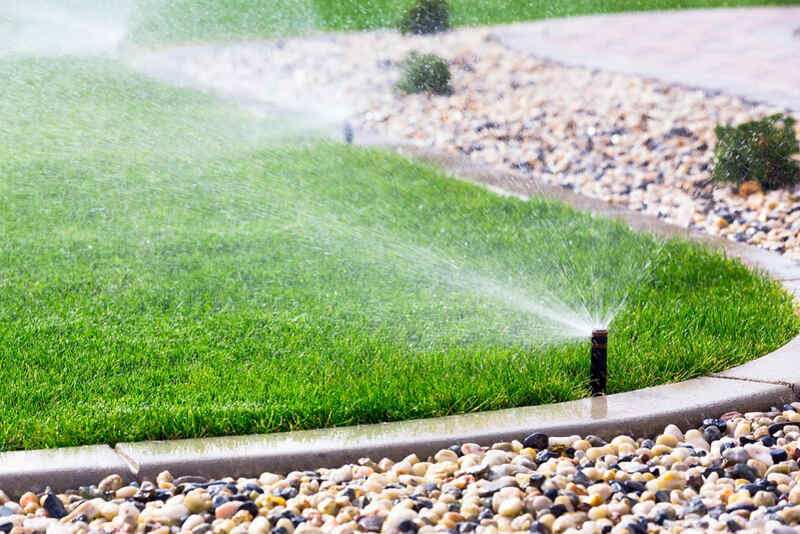
Photo Credit: Aqua Mechanical / Flickr / CC BY 2.0
This type of irrigation system is programmed to automatically water areas of the yard with a specific amount of water. You may also set a specific time and duration for the system to switch on. With this type of technology, you can maintain a healthy lawn without manually watering the grass or plants yourself.
Advantages of automatic irrigation systems:
- Easy-to-adjust system
- Save time
- Spend less on water usage
- Ensures even distribution of water where levels are low
Estimated cost: Hiring a landscape contractor to install an irrigation system will cost you between $2,000 and $4,900, depending on your yard size and the system you choose.
7. Eco-Friendly Artificial Turf
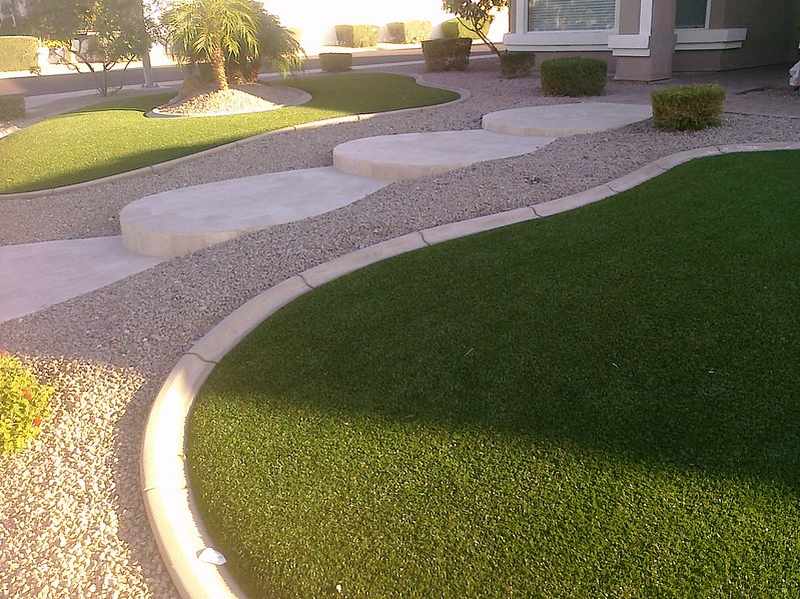
Photo Credit: Nick Bastian / Flickr / CC BY-ND 2.0
There may not be a clear winner in the debate between synthetic and natural turf, but synthetic grass will stay green all year round with minimal work. Over the years, artificial turf has become a popular low-maintenance landscaping option. It can withstand heavy foot traffic, and reduces the need for fertilizers and pesticides. Synthetic grass may appear very life-like that your envious neighbors won’t be able to tell the difference!
Advantages of artificial turf:
- Water-efficient
- No need for regular mowing, watering, or fertilizing
- Long-lasting solution
- No need to hire a landscaping company for upkeep
- Can withstand harsh weather conditions
Estimated cost: On average, the cost of getting artificial turf professionally installed ranges from $5 to $20 per square foot.
FAQ About Low-Maintenance Virginia Landscaping
In addition to boosting the local ecosystem, a low-maintenance landscape may benefit homeowners just as much. Native plants such as trees will absorb CO2 and release oxygen into the air, contributing to a better quality of air. Low-maintenance landscaping may also help reduce allergens, such as mold and pollen.
Groundcovers are low-growing plants that are a valuable addition to your low-maintenance landscape. They keep your yard green and full. Replacing turfgrass areas with groundcovers means less time spent on watering, mowing, and other maintenance work, just like low-maintenance plants or native trees.
Advantages of groundcovers:
• Retain moisture in soil, help prevent erosion
• Attract beneficial insects
• Reduce the use of chemical herbicides
• Improve your lawn’s visual appeal
• Lower maintenance requirements than grass
Here are some Virginia-native groundcovers for your low-maintenance garden:
• Green-and-gold (Chrysogonum virginianum)
• Christmas fern (Polystichum acrostichoides)
• Partridgeberry (Mitchella repens)
• Eastern teaberry (Gaultheria procumbens)
Virginia lies in the transition zone, so it’s tough to pick one grass type for every lawn in the state. Both cool- and warm-season grasses can thrive in this state, given its hot summers and moderately cold winters. However, we will recommend two low-maintenance grass types based on which region in Virginia you reside in.
If you live in a warm region, such as Tidewater, then centipedegrass is the best way to go. This warm-season grass is called ‘lazy man’s grass’ because it requires less maintenance and mowing than other warm-season turfgrasses.
On the other hand, tall fescue is a bunch-type grass that can thrive in almost every region across the state, such as Northern Virginia. It is the most heat-tolerant cool-season grass, and has a decent heat and drought tolerance. It does not produce significant thatch, though may still require the occasional mowing.
Check out our guide on the best grass types for Virginia to learn more about the grasses that thrive in your region.
Professional Help with Your Virginia Landscape
With all of the ideas mentioned above, it may seem like the right time to transform your backyard into a low-maintenance landscape. However, there are a few things to keep in mind before getting started on the project. Always consider the local climate, soil type, native plants, and other key factors to get a beautiful and sustainable backyard.
Some hardscaping features may have a high initial cost, but they will prove to be a worthwhile investment over time. Low-maintenance landscaping can save you plenty of time, support the local ecosystem, and improve your home’s curb appeal.
Your lawn might still require the occasional mowing, pruning, or trimming. Looking for a Virginia lawn care pro near you? We have trusted lawn care pros in Chesapeake, Norfolk, Richmond, Alexandria, and many more cities across the state.
Main Photo Credit: Michel Rathwell / Wikimedia Commons / CC BY 2.0